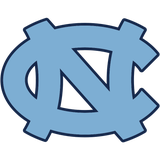
Why Round 3 of the Duke-North Carolina rivalry is actually a rarity
BROOKLYN—As the sun began to set on Thursday afternoon, the buzz that had coursed through the Barclays Center all afternoon had now seeped, along with most of the 17,732 fans who had experienced it, out the door and into the streets surrounding the five-year-old building with the rust-colored exterior. North Carolina had beaten Miami in one ACC tournament quarterfinal. Duke had beaten Louisville in another. For four hours the building had come alive almost entirely thanks to Tar Heels fans cheering for their team and then rooting against the enemy, and Duke fans doing the same. Now, in a little more than 24 hours, the rivalry that has long electrified a state, a region and the entire college basketball world would be temporarily relocated from its permanent home in central North Carolina to provide a jolt to the biggest city in the country, and it was making those who were already giddy with anticipation do and say some strange things.
“I was rooting for Duke,” confessed one fan adorned in Tar Heel regalia. “I’ve never seen them play before.”
This is what the ACC’s first northern invasion has wrought, the truly unthinkable: North Carolina fans pulling for the Blue Devils, if only to get the chance to finally glimpse a game between two of the sport’s most prominent programs.
This is to say nothing of course, of the price some of those fans would be willing to pay to get back in the doors on Friday. Scalpers were offering—and appeared to have little trouble selling—tickets at more than double face value just minutes after No. 14 Duke closed out a scintillating 81–77 comeback win over the 10th-ranked Cardinals, which was the capper to No. 6 UNC’s 78–53 victory against Miami earlier in the day.
It figures to be worth it. The Blue Devils and the Tar Heels have already played a pair of predictably outstanding games this season, the first won by Duke at Cameron Indoor Stadium on Feb. 9, 86–78, the second won by North Carolina at the Dean E. Smith Center on March 4, 90–83. They were two of the four most-watched college basketball games of the season to date and they provided the most thrilling theater. Two games. Eighty minutes. Forty-one lead changes. Twenty-three ties. One point of separation.
The Tar Heels, the defending ACC tournament champions, are playing to secure a No. 1 seed in the NCAA Tournament. They have the league’s Player of the Year in junior forward Justin Jackson, a first-team All-America. The Blue Devils are playing to possibly move as high as a No. 2 in the Big Dance. They have the possible No. 1 pick in the NBA draft in freshman forward Jayson Tatum and the leading vote-getter for first-team All-ACC in sophomore guard Luke Kennard. Both coaches, Duke’s Mike Krzyzewski and North Carolina’s Roy Williams, are in the Hall of Fame. Both schools have won five national championships.
“They’re a great program. We’re a great program. We’re two of the great programs,” Krzyzewski said afterward. “To be in that moment tomorrow, the people who were in the stands, they have a chance to enjoy that because those moments don’t happen all the time.”

Bob Donnan-USA TODAY Sports
Under Williams, the Tar Heels have played ACC newcomers like Boston College (three times), Miami (three times), Virginia Tech (twice) and Notre Dame (twice) more than they have played their next-door neighbors in the past 14 years. Duke has played the Eagles, Hurricanes, Hokies and Fighting Irish twice each.
This is due in part to the annual excellence that often leaves the rivals on opposite sides of the conference tournament bracket and thus requiring that any matchup take place in the championship game (Friday’s showdown will be just the second semifinal matchup between the two in the past 32 years, compared to eight in the title game).
However, it also is one of the unfortunate and unintended consequences of conference realignment. The same football-driven strategy that has swelled the ACC’s ranks to 15 members and its coffers to previously unimagined heights thanks to TV money has also enabled many of those programs to invest in their basketball programs as never before, creating a behemoth of a league that this year was the best in the country and could send as many as 10 of its members to the NCAA Tournament. The ACC’s expanded footprint has also convinced the league to move its cherished postseason tournament north of the Washington D.C. area for the first time in the league’s 64 years, and it will be back in Brooklyn next year.

Bob Donnan-USA TODAY Sports
The ACC has successfully elbowed the Big East out of the Big Apple’s college basketball conversation this week. While that reconstructed league holds its tournament for the 35th straight year at the Garden in midtown Manhattan, several of its one-time members were competing with and against the sport’s bluest-blooded royalty in an outer borough. New York City has long liked to brag that it is the “mecca of basketball”, but it has never seen a matchup quite like this.
After his team’s win, Williams admitted that he wasn’t sure how often he had faced Duke in the ACC tournament (“once or twice”) and said, “I can’t even remember where it was.”
He—and a lot of other people—should have no trouble remembering this one.
This article originally appeared on


